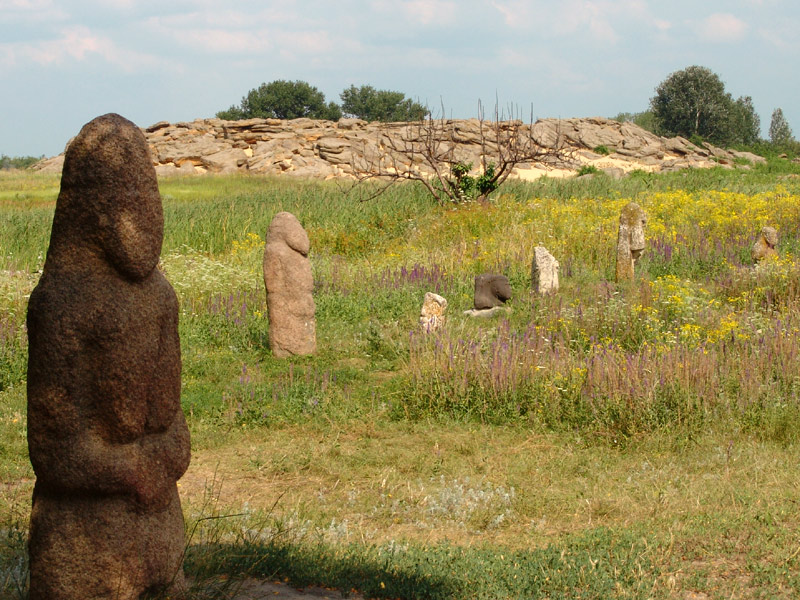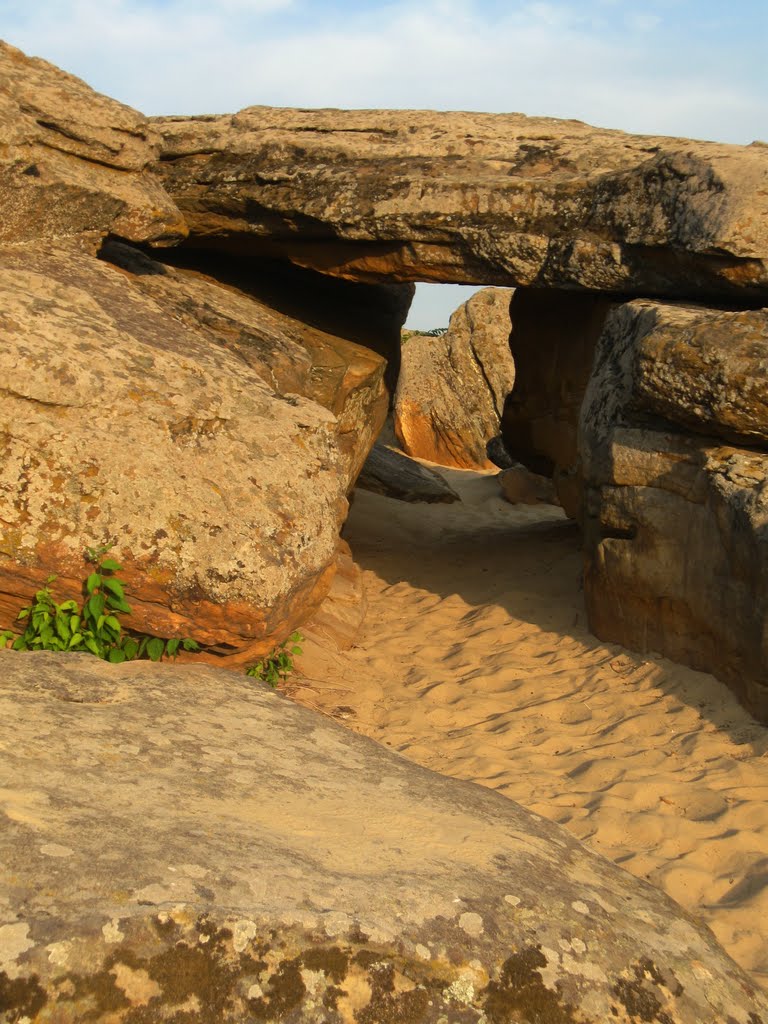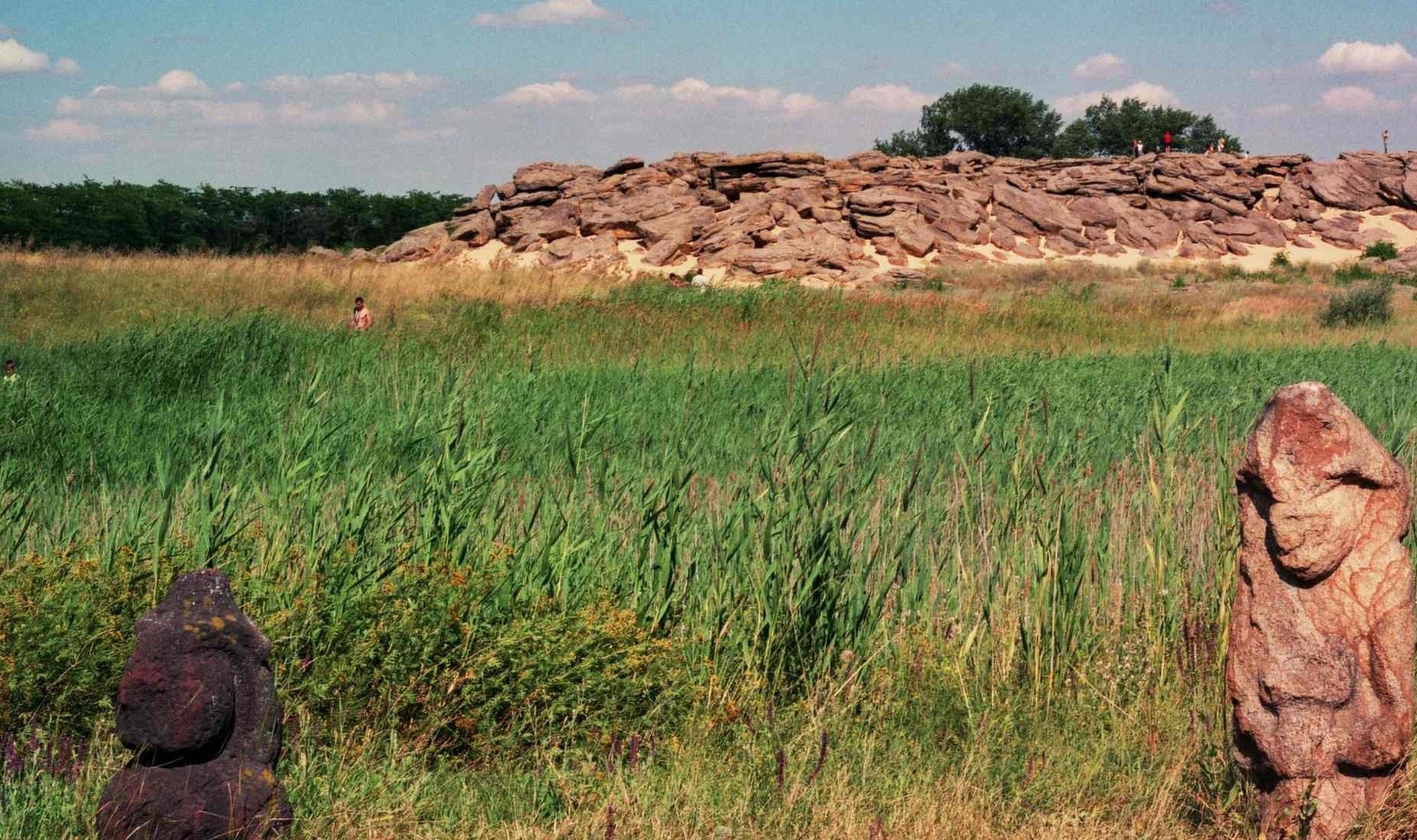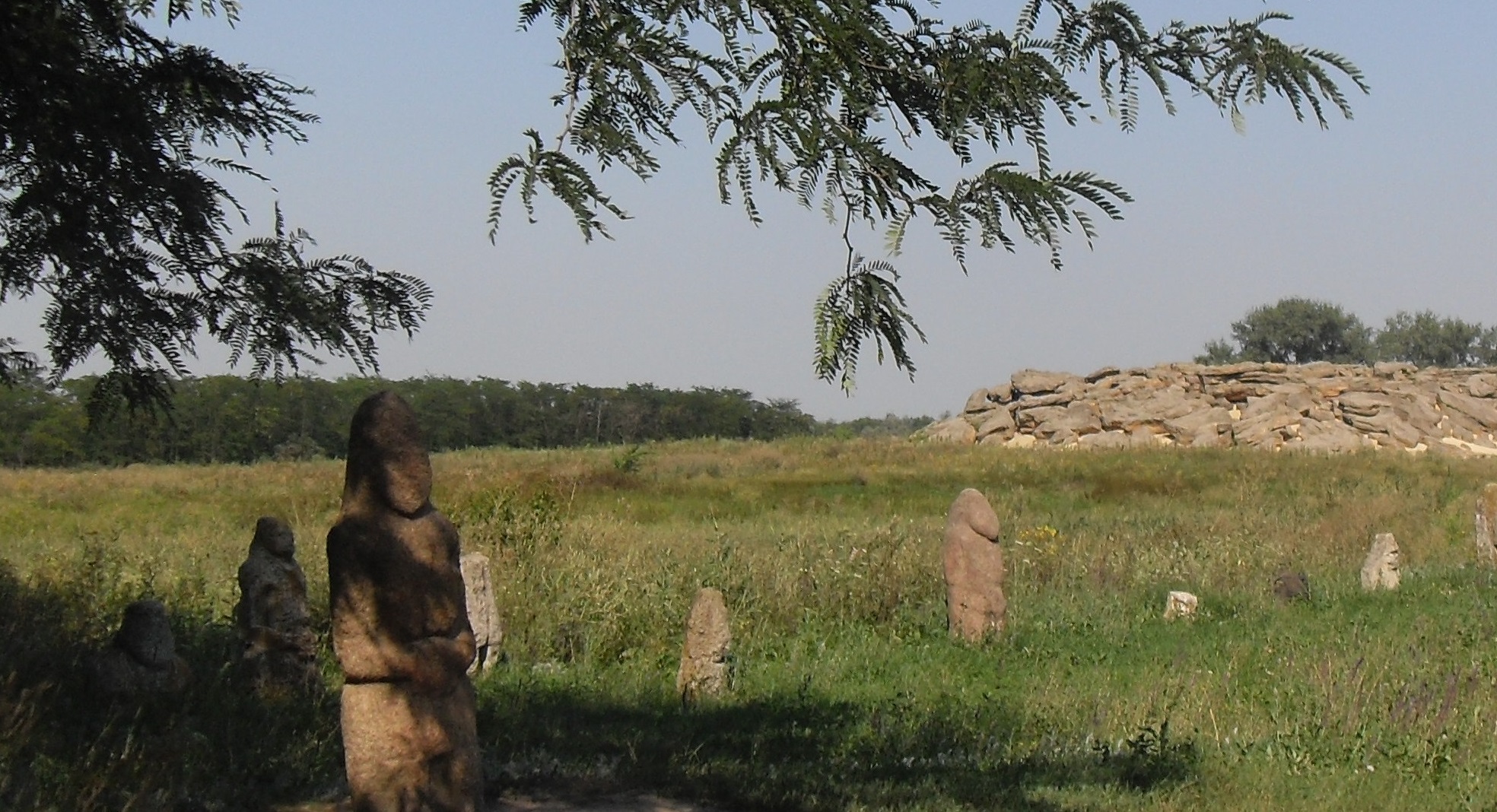Kamyana Mohyla is an archaeological site in the Molochna River (literally "Milk river") valley, about a mile from the village of Terpinnya, Zaporizhia Oblast, Ukraine.
The site encompasses a group of isolated blocks of sandstone, up to twelve meters in height, scattered around an area of some 3,000 square meters. As Noghai legend has it, it resulted from a scuffle of two baghaturs who took turns throwing rocks at each other. In truth, the site had its origins in a sandbank of the Tethys Ocean. For a long time it was an island in the Molochna River, which has since been silted up and now flows a short distance to the west. It is thought to represent the only sandstone outcrop in the Azov-Kuban Depression.
The shape of this sand hill is similar to that of kurgans that dot the Pontic-Caspian steppe. In 1889, the Russian archaeologist Nikolay Veselovsky was called upon to explore the enigmatic site and started excavations the following year. As soon as he concluded that the site was a burial mound, excavations were terminated. There was very little scientific exploration of the site during the first third of the 20th century.
In the 1930s the site was investigated by a team of scholars from Melitopol under Valentin Danylenko (1913–82). The young archaeologist claimed to have discovered thirty caves with petroglyph inscriptions which he dated from the 20th century BC to the 17th century AD. Danylenko resumed his work on the site after World War II and claimed to have discovered thirteen additional caves with petroglyphs.














